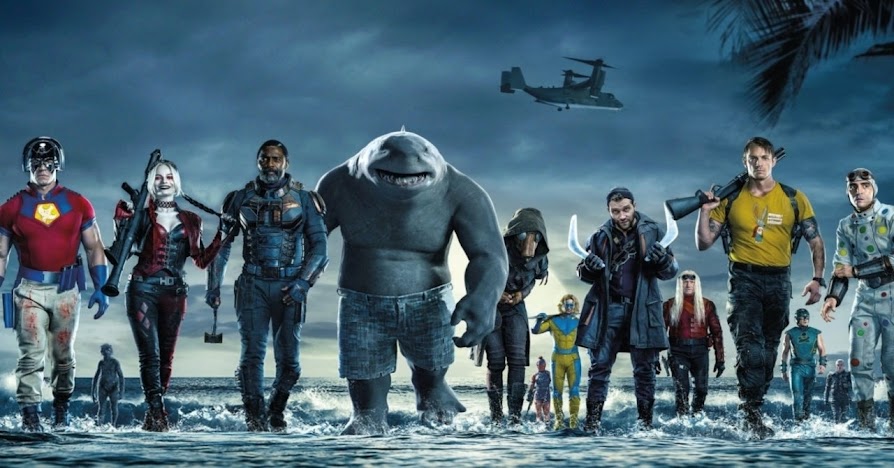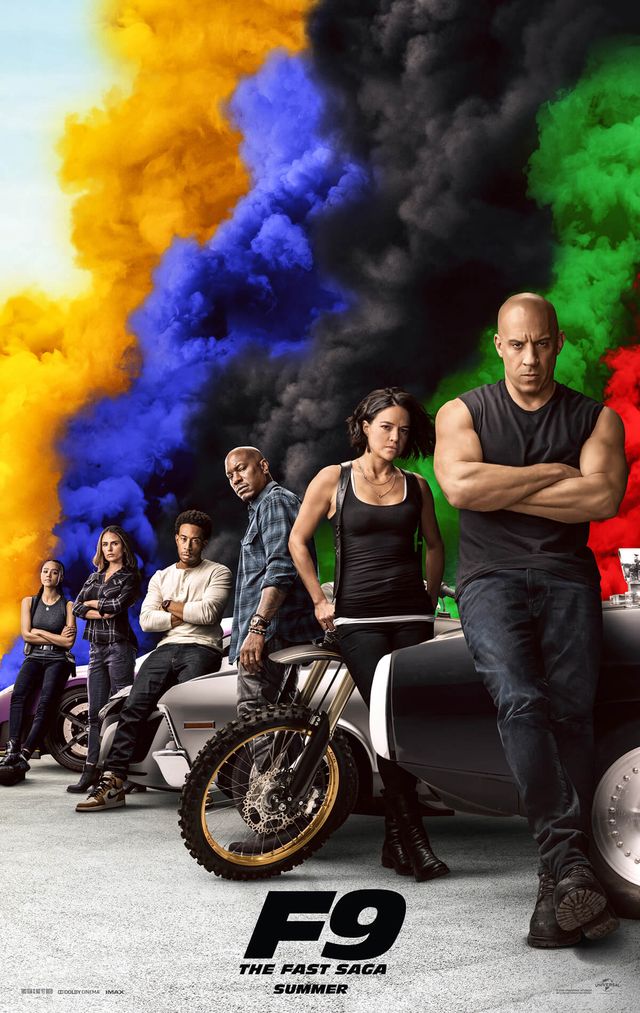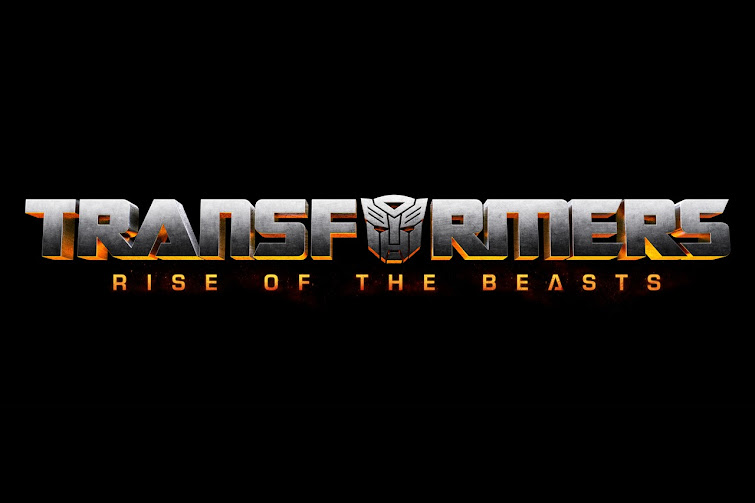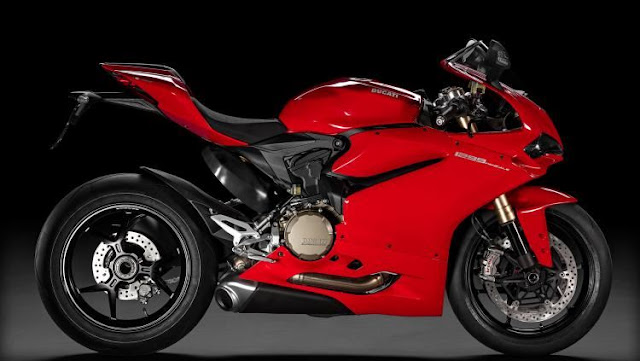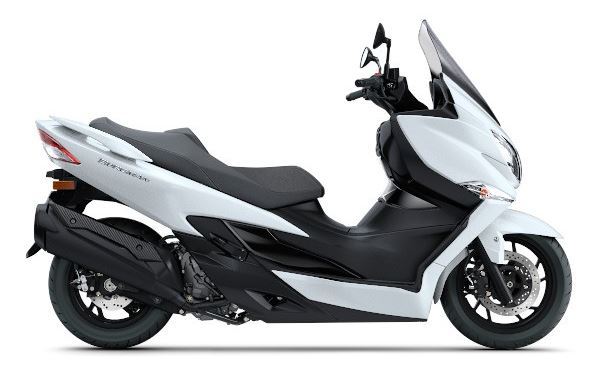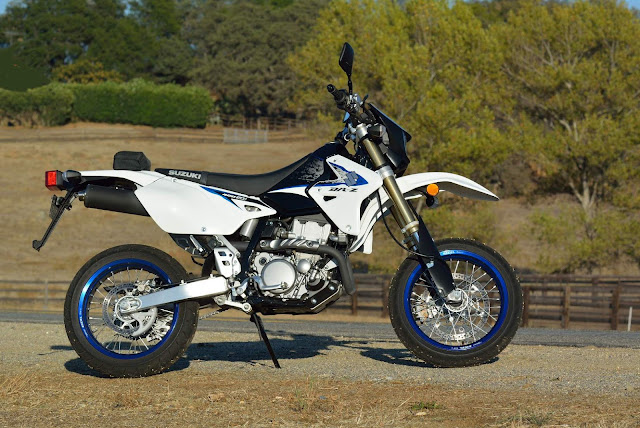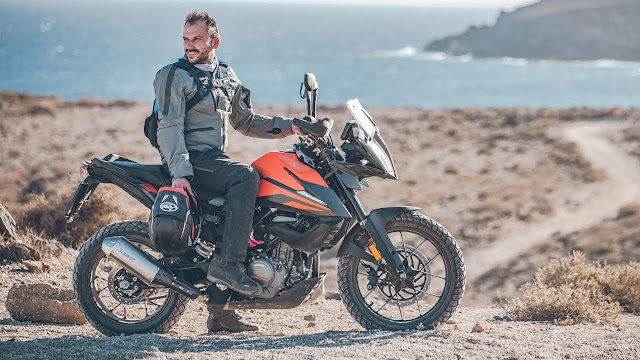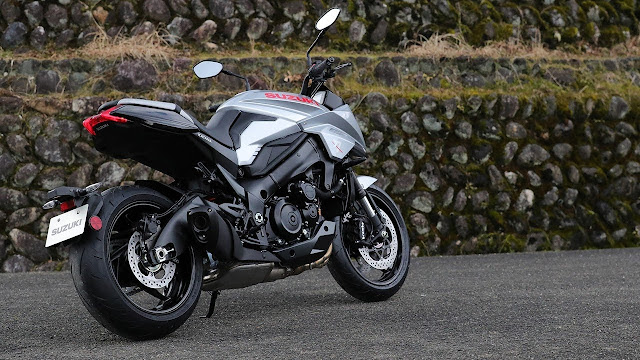In 1980, Cycle World dubbed the four-valve Suzuki GS1100 “the best all-around superbike in history.” It turned the quarter-mile in 11.39 seconds at 118.42 mph. It was arguably the finest-handling Japanese production motorcycle of the time. It was practical; it got 47.4 mpg on the CW test loop, and it was as comfortable as anything without a Windjammer fairing. It was a formidable large-capacity motorcycle with real presence. It may have been exceptional, but the GS1100 was nothing new.
Like other iconic superbikes of the era—the Kawasaki Z1 and Honda CB750, for instance—the big GS exemplified the Japanese motorcycle industry’s conservative approach toward design. Wide bars, circular headlight, and bread-loaf seat were the status quo. To the unacquainted in 2020, there aren’t a lot of visual cues that distinguish the era’s sit-up superbikes from the more plebeian UJMs that sprouted in their midst.
It’s as if Suzuki product planner Etsuo Yokouchi divined the GS’s inevitable decay—chrome oxidized from years of neglect, vinyl ignominiously patched with duct tape fraying at the edges, steel tank pasted with wet leaves. The 2020 version of the best all-around superbike of 1980 is a forgotten also-ran marooned beside a rotting front porch in the damp corner of rural-town USA.
It takes little stretch of the imagination to envision Yokouchi, in search of something future-proof, kicking around the Hamamatsu factory like some bored kid in the backwaters, hankering to change the world.
What he came up with was the 1982 GS1000S Katana, a futuristic expression of the Japanese design philosophy of wabi-sabi. Though very much based on the GS1100 platform, Suzuki hoped the Katana’s daring departure from established norms would be the answer to stagnant sales. With its rectangular headlight, triangular fairing, and long two-tone seat, there’s a note of asymmetrical discordance—almost an appearance of being unfinished —that articulates an ephemeral beauty, which is a very wabi-sabi virtue. Intentionally or not, the Katana’s radical thinking comes across as deeply rooted in ancient Japanese philosophy. It’s ironic that it was sketched by the German design firm headed by Hans Muth.
Yokouchi himself previously designed the X-6 Hustler, the GT750, and the GT250, but his stint as manager of the racing department in 1974 and 1975 crystallized his desire to build a full-on sportbike. The Katana’s clip-on handlebars and rearsets (firsts for a production bike from Japan) and notoriously taut suspension left a physical impression on its rider as uncompromising as its visual one. The Katana was a motorcycle that demanded sacrifice from its rider.
The Katana became the first movement in Yokouchi’s symphony of speed. But by the time enthusiasts first laid eyes on it, he’d already begun envisioning his masterpiece. Yokouchi wasn’t content with radical. What he wanted was a revolution.
And here we are in 2020 with the legendary Katana badge reborn for a new generation.
Like the original, the new Katana is largely based on an existing GS, the GSX-S1000. History repeats itself, with Suzuki entrusting the concept design to an outside firm, this go-around headed by Italian designer Rodolfo Frascoli. “[The challenge was to] make it a redefined modern motorcycle with real novelty,” says Kazutaka Ogawa, Suzuki director of design development, “not a revival or a run-of-the-mill déjà vu [motorcycle].”
The GSX-S and Katana share the same chassis and both utilize a street-tuned version of the long-stroke (73.4 x 59.0mm) 999cc inline-four from the legendary GSX-R1000 K5. Stainless-steel valves replace the K5’s titanium ones, and revised cam timing and gearing (via two additional teeth on the rear sprocket) conspire to deliver a generous helping of torque throughout the rev range for street-riding bliss. The Katana’s lower gearing means that at 90 mph in top gear, the engine is spinning at 6,000 rpm, and there’s significant buzz transmitted through the bars and pegs.

Compared with the semitruck-long original, the modern Katana looks compact and stubby, almost football-shaped. At 475 pounds fully fueled, it’s also around 72 pounds lighter than the original. The seat and tank are relatively narrow considering the four cylinders situated across the frame, but the rider is perched on top—rather than in—the motorcycle. After an hour in the saddle, the seat begins to communicate its, ahem, minimalism. The bars are lower and narrower than on a typical naked bike, so just when you start to feel antsy in the saddle, you also begin to pine for slightly higher, closer bars to accommodate a more upright position. Coupled with the nonexistent wind protection, the only option is to hunker down in search of a clean pocket of air and a different position to give the shoulders a break.
But if one must hunker, finding a twisty road to do it on is the natural choice. There, you’ll be dropping your head and hanging off anyway, and the Katana will be at home in its corner-terrorizing habitat. Heading into Borrego Springs on S22 (er, make that “the S22,” to use the Californian’s vernacular) is a reminder that once you escape the gridlocked hellhole of Southern California, it has some of the finest roads anywhere on the planet. The road ascends and descends with a mix of sweepers and third-gear corners that keep the Katana in the generously broad sweet spot of its rev range.
Trail-braking hard into downhill hairpins, the front suspension doesn’t offer the last word in hard-braking support, too quickly compressing through its travel and skipping off small bumps, ultimately making the front-end feel a bit vague. Getting on the gas to take load off the front alleviates much of the issue, however, so the Katana tracks well midcorner and through the exit. Otherwise, the fully adjustable 43mm KYB front and rear shocks (adjustable for pre-load and rebound) are compliant over rough surfaces. With its Brembo radial monoblock caliper (front) and Nissin (rear), the Katana recorded a 60-to-zero braking test in 133.9 feet, comparable to the 136.8 feet recorded by the Honda CB1000R that we tested in 2019. Unfortunately, the Katana’s system doesn’t offer the same feedback through the lever as higher-spec items.
In terms of handling, Michael Gilbert, CW’s resident MotoAmerica racer, notes: “The Katana requires a degree of physical exertion to change directions in side-to-side transitions, but once settled into the corner, its chassis is impeccably planted, confidently carving corners with the prowess of a sportbike.” It’s worth remembering that the Katana doesn’t disguise its rotating mass with a fancy counter-rotating crank like many of today’s cutting-edge literbikes. The K5 engine is, after all, essentially a 15-year-old unit.
But that 15-year-old engine is the Katana’s party piece. The GSX-R1000 K5 is one of the most notorious motorcycles of the halcyon age of race-replica superbikes. Valentino Rossi describes his 500cc grand prix motorcycle as a “bike beyond all reason.” Mere mortals would make a similar remark about the GSX-R1000 K5. It was an absolute gorilla and delivered all its power with not one rider aid, except excellent throttle response and predictable, abundant torque. Suffice it to say, there’s ample reason BMW studied the K5 powerplant when building its first S1000RR superbike. Subsequent Gixxers got heavier as emissions standards grew stricter, and power modes and other electronics were added, so in many regards, the K5 represents perhaps the purest evolution of raw GSX-R.
Like a 15-year-old barrel of bourbon that’s lost more heavenly fluid to the angels than its seven-year-old counterpart, the Katana motor has lost a few ponies and revs in its revamped role as a roadbike. Suzuki chief engineer Satoru Terada emphasizes: “We didn’t want to unnecessarily pursue peak power, but instead focus on pursuing the ideal characteristic for streetfighter models that correspond to Katana’s positioning in the market.” On our dyno, the Katana produces 139.6 horsepower at 10,100 rpm and 76.3 pound-feet of torque at 9,200 rpm. The last time we put a K5 on the dyno, it produced 156.9 horsepower at 11,500 rpm and 78.9 pound-feet of torque at 8,600 rpm. So, while the Katana’s unit isn’t the uncut original, it’s still a high-proof swig of Japanese firewater. And to hear it is to know it. That muscular, classic-four rumble is Suzuki’s leitmotif—all induction howl and on-the-pipe savagery. The exhaust note sounds bassy and full by 2020 standards.
At the first touch of the throttle, it’s all systems go. While on-off throttle isn’t abrupt—the ’16 GSX-S’s fueling niggles were resolved with ignition and EFI updates in 2018 and 2019—the throttle is like a hair trigger, requiring the most delicate touch. On the gas, the motor has that frenetic yet buttery power delivery characteristic of a 1,000cc four. There’s so much grunt down low that taking corners in too high a gear isn’t really a thing. But hit 7,000 rpm and the motor comes to life, resurrecting Y2K5 images of our wayward, wheel-lofting youth. Where the K5 was searingly fast—just fast as hell—the Katana is simply fast. Fast as purgatory maybe. Fast enough that it’s hard to restrain yourself from being a glutton of vroom, gorging yourself on whopping helpings of horsepower and noise. As the poet William Blake said, “Those who restrain desire do so because theirs is weak enough to be restrained”—perhaps not a great excuse in the event a cop pings you in a moment of unrestrained throttle twisting, but still.
On a Katana, desire is measured by quarter-mile trap speeds. At our testing facility, it set a time of 10.86 seconds at 133.3 mph and went from zero to 60 in 3.2 seconds—that’s not too far off times set by current superbikes.
With an excess of exuberance, we found the Katana delivered an average of 43 mpg. With its diminutive 3.2-gallon tank, expect to start getting nervous when the tripmeter hits just 100 miles.
The Katana has a slipper/assist clutch that’s as light as can be and barely needs to be touched on upshifts. While a quickshifter would be nice, the gearbox is so lovely, it doesn’t seem a glaring omission. Besides, blipping the throttle on downshifts provides a period-correct pleasure. It’s easy to find neutral at a standstill; the shift lever feels light, and the close-ratio box just begs to be frequently exploited for the pure joy of it.
That being said, at $13,499, the Katana isn’t particularly well-equipped. It has nonswitchable ABS and three-level traction control (plus off), but neither are lean-angle-sensitive. The LCD dash is a bit outmoded, and several of our testers found it difficult to navigate. It also lacks the brightness we’ve grown accustomed to with TFT displays.
There’s no doubt aesthetics are an important part of the Katana’s formula. Consequently, pride of ownership is of great value here, so the stakes are high when it comes to fit-and-finish. Unfortunately, the Katana falls a bit short. Welds on the aluminum frame are inelegant-looking compared with those of the K5, which were as precise and delicate as the piping on a wedding cake. Likewise, the plastic tank cover has a thin seam discernible through the paint, and the seat-cover material has an odd latex feel.
Gilbert says the whole package feels like a 15-year-old motorcycle. That’s not necessarily a bad thing. In its homage to 1981, Suzuki ended up with an ode to 2005. But there’s more to it than that.
For 2020, Suzuki took a sportbike and turned it into a standard. In the ’80s, it took a standard and turned it into a sportbike. It illustrates the vast evolution of the motorcycle (and of market demands) in 40 short years.
The original Katana marks a turning point in that evolution, a distinct moment in a two-wheeled world on the cusp of change. Yokouchi’s Katana looks radical to this day, but it was not his revolution. That would be the 1985 GSX-R750, the bike that made him the father of the modern sportbike. While the Katana’s air-cooled engine and steel-tube double-cradle frame were mechanically conventional, the GSX-R was revolutionary in practically every way.
In retrospect, the original Katana is a transition bike, a one-way bridge between the sit-up superbikes of the 1970s and race-replica R sportbikes ushered in by the first GSX-R. The 2020 Katana is so special because it transports its rider back and forth between both of those worlds. It’s a mashup of the evolution of motorcycling, the missing link between generations. It bends the line between the GS1100, GS1000S Katana, GSX-R750, and GSX-R1000 K5, transforming it into a closed loop.
The challenge with building a retro bike—especially one that reinterprets an icon that was all about looking ahead—is it risks coming out retrograde, not retrospective. But the Katana’s unique blend of performance, style, and authentically Japanese sensibilities makes it a true retrospective that honors not just its namesake, but also Suzuki’s storied history and pursuit of GS excellence.







